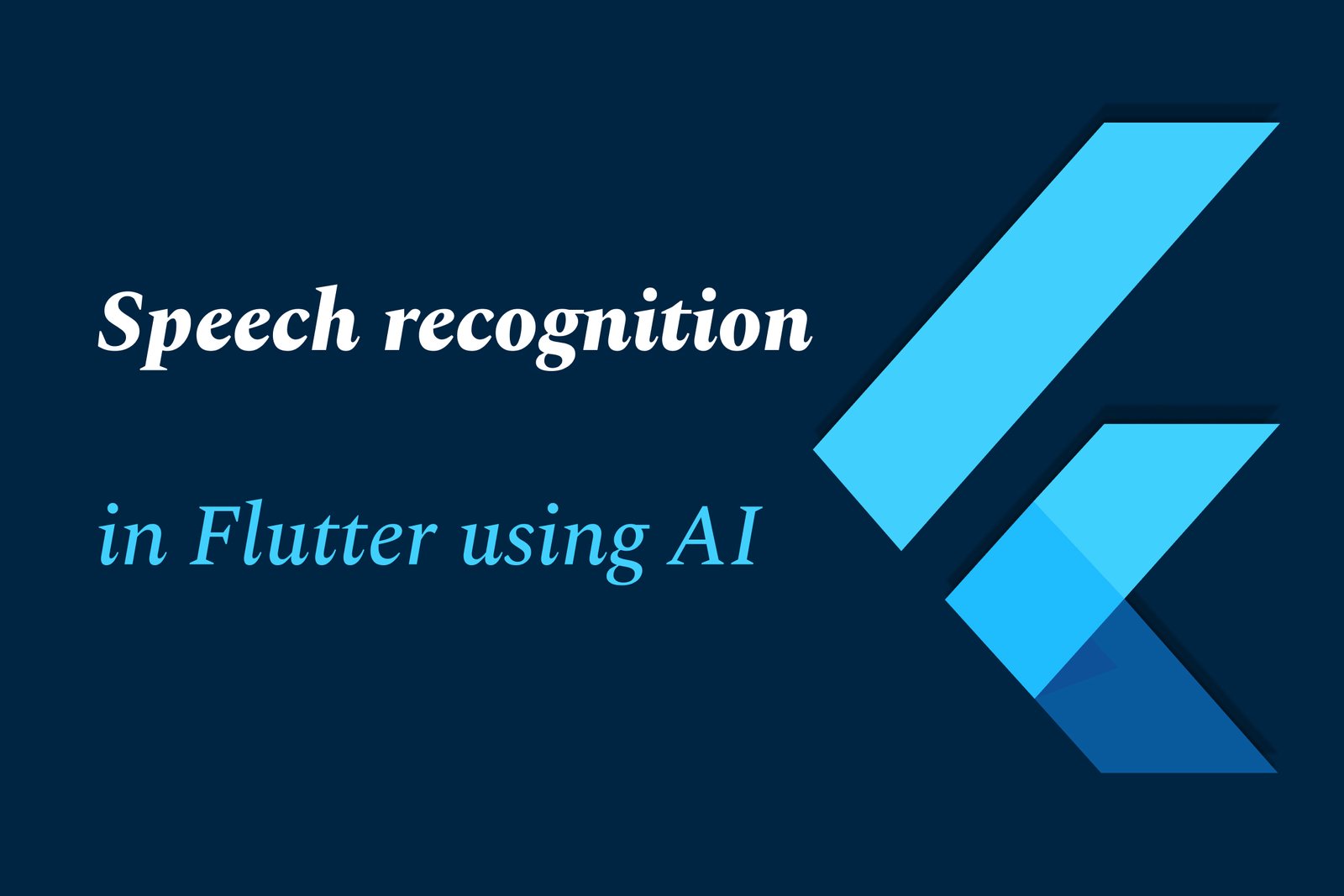Speech Recognition in Flutter Using AI
Speech recognition in Flutter using AI enables apps to convert spoken words into text by leveraging on-device or cloud-based AI models. This enhances user interaction with voice commands, supports multilingual input, and improves privacy and responsiveness across platforms.
Speech recognition in Flutter using AI
1 ) Introduction to Speech Recognition in Flutter
Flutter enables app development across multiple platforms.
Integrating device specific features like Speech to Text can be challenging in cross platform frameworks.
AI powered speech recognition enhances app usability, privacy, and responsiveness.
2 ) Using speech_to_text Flutter Plugin
The `speech_to_text` plugin exposes native speech recognition capabilities for Android, iOS, macOS, and web.
Supports commands and short phrases rather than continuous listening.
Allows initializing speech recognition, starting/stopping listening, and retrieving recognized words.
Sample basic usage involves checking availability, listening to speech, and handling recognition results.
Supports customization such as haptics control and punctuation during recognition.
Flutter example provided demonstrating initialization, start, stop, and result handling with UI feedback.
3 ) Advanced On device Speech Recognition with AI: Picovoice Leopard SDK
Picovoice’s Leopard Speech to Text SDK offers cross platform, on device speech recognition with minimal code.
Benefits include no user audio leaving the device, lower latency, and better privacy.
Setup requires proper permissions in AndroidManifest.xml and iOS Info.plist.
Add the `leopard_flutter` plugin and necessary language models to project assets.
Use Picovoice AccessKey for authentication.
Transcription involves creating `Leopard` instance and passing buffered audio directly for text conversion.
Additional metadata (word timing, confidence) is available for detailed use.
Audio recording facilitated by the `flutter_voice_processor` plugin to capture microphone input.
4 ) Implementing Voice Recognition Workflow in Flutter
Initialize speech recognition or AI model once at app startup.
Start capturing audio from microphone and stream to recognition engine.
Receive real time or batch transcription results and update UI accordingly.
Handle permission requests and errors gracefully.
Use recognized text for commands, translations, feedback, or other app features.
5 ) Benefits and Use Cases
Language learning apps providing accuracy feedback on spoken words.
Voice chatbots and assistants that understand spoken commands.
Translation apps combining speech recognition with AI translation services.
Privacy sensitive contexts requiring on device processing without cloud dependency.
6 ) Summary
Flutter, combined with AI enabled speech recognition plugins like `speech_to_text` and Picovoice Leopard SDK, allows developers to build fast, accurate voice enabled apps.
On device AI processing enhances privacy and reduces latency compared to cloud based solutions.
Comprehensive API support and open source plugins facilitate integration across platforms.
Developers can leverage these tools for educational apps, accessibility features, voice commands, and more.
https://justacademy.in/news-detail/new-features-in-flutter-4.0-stable
https://justacademy.in/news-detail/ai-powered-ui-generation-in-flutter
https://justacademy.in/news-detail/flutter-sdk-updates-in-july-2025
https://justacademy.in/news-detail/flutter-ai-chatbot-integration-guide
https://justacademy.in/news-detail/flutter-now-supports-desktop-and-embedded-devices
Related Posts
In 2025, top Angular libraries offer modern, feature-rich components and tools for building dynamic web apps. From powerful data grids to low-code platforms like UI Bakery, these libraries enhance development speed, UI design, and scalability, making them essential for Angular developers.
Migrating from AngularJS to Angular 17 involves gradually upgrading your app by running both frameworks together using tools like ngUpgrade, rewriting components in TypeScript, and adopting Angular’s modern architecture to enhance performance, maintainability, and long-term support.
Angular state management tools help organize and handle app data efficiently, improving scalability and maintainability. Popular options include NgRx for robust, RxJS-based patterns, and newer Signal Store solutions that offer simpler, reactive approaches integrated tightly with Angular’s latest features.
RxJS in Angular empowers developers to manage asynchronous data streams with powerful operators like `forkJoin`, `combineLatest`, and `zip`. Mastering these key operators in 2025 is essential for building efficient, reactive applications that handle complex event sequences seamlessly.
Angular performance optimization in 2025 focuses on improving app speed and responsiveness by using techniques like OnPush change detection, lazy loading, efficient data caching, and AOT compilation. These practices reduce load times, enhance user experience, and ensure scalable, fast Angular applications.
In 2025, Angular remains preferred for large-scale, enterprise apps with its robust, all-in-one framework, while Vue attracts developers seeking simplicity and fast development for smaller projects. Both frameworks excel, with choice driven by project needs and team expertise.
Angular Signals are a new reactive primitive in Angular 16 that enable fine-grained, efficient change detection by automatically tracking dependencies and updating only affected parts of the UI. They simplify state management and boost app performance, revolutionizing Angular's reactivity model.
Angular interview questions to prepare in 2025 focus on core concepts like components, directives, data binding, routing, and dependency injection, along with TypeScript mastery and latest Angular features to ensure strong practical knowledge for building scalable, efficient web applications.
AngularJS reached its official end of support in January 2022, meaning no further updates or security patches. To ensure app security and performance, developers should consider migrating to modern Angular versions or seek third-party long-term support options if immediate migration isn’t possible.
The Angular Roadmap 2025 highlights upcoming features focused on improving developer experience and performance, including zoneless Angular, Signals integration, enhanced Forms, async data handling, improved HMR, and expanded Angular Material/CDK enhancements, driving modern, efficient web app development.










